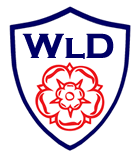River Darwen – Walton le Dale
The River Darwen is a river running through the towns of Darwen and Blackburn in county of Lancashire, eventually joining the River Ribble in Walton le Dale.
The River Darwen was seriously polluted with human and industrial effluent during the Industrial Revolution, up to the early 1970s. The River Darwen often changed colour dramatically as a result of paper and paint mills routinely using river water to flush out dye and paint tanks. This practice has now ceased and the river is relatively clear with the return of trout and small fish.
Rising in Jack’s Key Clough at the confluence of two streams from Bull Hill and Cranberry Moss, the River Darwen flows through the town of Darwen, continuing into the suburbs of Blackburn past Ewood Park. It is joined by the River Blakewater near Witton Country Park in Blackburn and leaves the mostly urban landscapes of the towns behind, flowing through parklands and valleys. A further tributary, the River Roddlesworth, joins the Darwen at the bottom of Moulden Brow on the boundary between Blackburn with Darwen and Chorley Borough Council (the name Moulden Brow being associated with Moulden Water, an alternative name for this stretch of the river). From there, the River Darwen flows past Hoghton Tower through Hoghton Bottoms and Samlesbury Bottoms, finally combining with the River Ribble at Walton le Dale.
At Walton le Dale, the River Darwen was the backdrop to the battle of Preston during the Second English Civil War, a Parliamentarian victory immortalised in John Milton’s poem “To Cromwell”: –
While Darwent Streams with Blood of Scots imbru’d…
In this poem, the river appears to be named “Darwent,” giving evidence of its derivation from a Brythonic dialect form similar to the Old Welsh derwenyd (Modern Welsh derwenydd), meaning “valley thick with oaks”.
